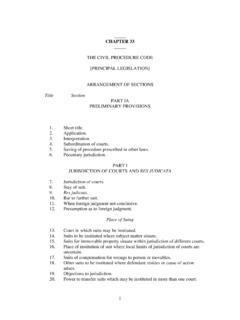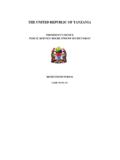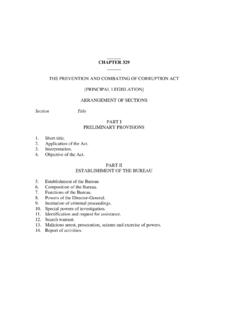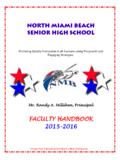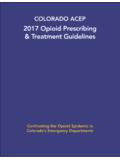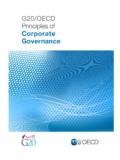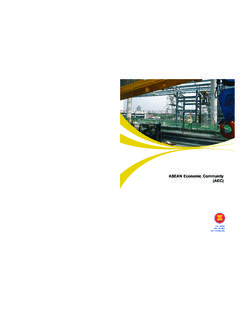Transcription of THE EAST AFRICAN COMMUNITY CUSTOMS UNION (RULES …
1 THE EAST AFRICANCOMMUNITY CUSTOMS UNION (RULES OF ORIGIN) RULES, 2015 THE EAST AFRICAN COMMUNITY EACJUMUIYA YA AFRIKA MASHARIKIISBN: 978-9987-712-62-51 THE EAST AFRICAN COMMUNITY THE EAST AFRICANCOMMUNITY CUSTOMS UNION (RULES OF ORIGIN) RULES, 2015 E A C JUMUIYA YA AFRIKA MASHARIKI 2 THE EAST AFRICAN COMMUNITY CUSTOMS UNION (RULES OF ORIGIN) RULES, 2015 TABLE OF CONTENTSRULE TITLERULE 1 CitationRULE 2 Purpose of the Rules of OriginRULE 3 InterpretationRULE 4 Origin criteriaRULE 5 Goods wholly produced in a Partner StateRULE 6 Goods produced using materials not wholly obtained from a Partner StateRULE 7 Processes not conferring originRULE 8 Cumulation of originRULE 9 Unit of qualificationRULE 10 SetsRULE 11 Separation of materialsRULE 12 Treatment of mixturesRULE 13 Treatment of packingRULE 14 Neutral elementsRULE 15 TerritorialityRULE 16 Direct transportRULE 17 Issuance of certificate of
2 OriginRULE 18 Issue of duplicate certificate of originRULE 19 Issue of certificate of origin on the basis of proof of origin issued or made out previouslyRULE 20 Approved exporterRULE 21 Validity of proof of origin RULE 22 Exemptions from certificate of originRULE 23 Notification of information related to competent authoritiesRULE 24 Verification of proof of originRULE 25 Preservation of documentsRULE 26 Infringement and penaltiesRULE 27 ManualsRULE 28 Directives by the CouncilRULE 29 Cessation of the Rules of OriginRULE 30 Revocation of the East AFRICAN COMMUNITY (Rules of Origin) Rules3 SCHEDULE.
3 TITLEF irst Schedule List of products and working or processing operations which confer originating statusSecond Schedule East AFRICAN COMMUNITY Certificates of OriginThird Schedule Suppliers/Producers Declarations Fourth Schedule Origin DeclarationsFifth Schedule East AFRICAN COMMUNITY Form for Verification of OriginSixth Schedule East AFRICAN COMMUNITY Information Certificate 4 THE EAST AFRICAN COMMUNITY CUSTOMS UNION (RULES OF ORIGIN) RULES, 2015 RULE 1 CitationThese Rules may be cited as The East AFRICAN COMMUNITY CUSTOMS UNION (Rules of Origin) Rules, 2015 . RULE 2 Purpose of the Rules of OriginThe purpose of these Rules is to implement the provisions of Article 14 of the Protocol and to ensure that there is uniformity among the Partner States in the application of the Rules of Origin and that to the extent possible the process is transparent, accountable, fair, predictable and consistent with the provisions of the 3 InterpretationIn these Rules, unless where the context otherwise requires: assembly means the manufacturing process which utilizes precision jigs, fixtures and specialized facilities, and equipment.
4 Classified means the classification of goods under a particular heading or sub-heading in the Harmonized Commodity Description and Coding System; Committee means the East AFRICAN COMMUNITY Committee on Trade Remedies established under Article 24 of the Protocol on the Establishment of the East AFRICAN COMMUNITY CUSTOMS UNION ; competent authority means a body or organization designated by a Partner State to issue a certificate of origin; completely knocked down means a kit consisting of parts and subassemblies used for the manufacturing of finished products; Council means the Council of Ministers of the COMMUNITY established by Article 9 of the Treaty; CUSTOMS value means the value as determined in accordance with section 122 of the East AFRICAN COMMUNITY CUSTOMS Management Act, 2004; 5 ex-works price means the price determined in accordance with the provisions of the First Schedule paid for the product ex-works to the manufacturer in the Partner State in whose undertaking the last working or processing is carried out; foreign country means a country other than a Partner State.
5 Generally Accepted Accounting Principles means recognised consensus or substantial authoritative support given in the territory of a Partner State with respect to the recording of revenues, expenses, costs, assets, and liabilities, the disclosure of information, and the preparation of financial statements. Generally Accepted Accounting Principles may encompass broad guidelines for general application, as well as detailed standards, practices, and procedures; goods means both materials and products; heading means four digit codes used in the Harmonized Commodity Description and Coding System; high seas has the same meaning as in the United Nations Convention on the Law of the Sea; manufacturing means any process that requires technology, infrastructure and manpower investment by which a commodity is finally produced.
6 Materials means raw materials, semi-finished products, products, ingredients, parts and components used in the production of goods; maximum content of non-originating materials means the maximum content of non-originating materials which is permitted in order to consider a manufacture as working or processing sufficient to confer originating status on the product. It may be expressed as a percentage of the ex-works price of the product or as a percentage of the net weight of these materials used falling under a specified group of chapters, chapter, heading or sub-heading; non-originating material means materials originating from outside the Partner States.
7 Part means an individual component, fashioned or otherwise manufactured from one piece of metal or other material only and not joined or connected in any way to another component or material; Partner States means the Republic of Burundi, the Republic of Kenya , the Republic of Rwanda, the United Republic of Tanzania, the Republic of Uganda, and any other country granted membership to the COMMUNITY under Article 3 of the Treaty;6 produced and a process of production include the application of any operation or processes with the exception of any operation or processes as at out in rule 7 of these rules; producer includes, among others, mining, manufacturing or agricultural enterprise or any individual grower or craftsman who supplies goods for export; product means a manufactured product, including a product intended for later use in another manufacturing operation; Protocol means the Protocol on the Establishment of the East AFRICAN COMMUNITY CUSTOMS UNION .
8 Secretariat means the Secretariat of the COMMUNITY established by Article 9 of the Treaty; sub-heading means six digit codes used in the Harmonized Commodity Description and Coding System; Summit means the Summit established by Article 9 of the Treaty; supplier means a natural or legal person who supplies goods for further manufacture within a Partner State or for export to another Partner State; territory includes the territorial sea and the exclusive economic zones of the Partner States as defined in the United Nations Convention on the Law of the Sea; Treaty means the Treaty for the Establishment of the East AFRICAN COMMUNITY ; value of non-originating materials in the list in Part 1 of the First Schedule means the CUSTOMS value at the time of importation of the non-originating materials used, or, if this is not known and cannot be ascertained, the first ascertainable price paid for the materials in a Partner State.
9 Value added means the ex-works price of a finished product minus the CUSTOMS value of the material imported from outside the Partner States and used in the process of production; vessel of a Partner State means a vessel of a Partner State which is registered in or flies the flag of a Partner State and satisfies one of the following conditions:(a) at least 20 per centum of the officers of the vessel are nationals of the Partner States; 7(b) at least 20 per centum of the crew of the vessel are nationals of the Partner States; or(c) at least 20 per centum of the equity holding in respect of the vessel are held by nationals of the Partner States or institution, agency, enterprise or corporation of the government of Partner 4 Origin criteria1.
10 Goods shall be accepted as originating in a Partner State where the goods are- (a) wholly produced in the Partner State as provided for in rule 5; or (b) produced in the Partner State incorporating materials which have not been wholly obtained there, provided that such materials have undergone sufficient working or processing in the Partner State as provided for in rule For the purposes of implementing these Rules, the Partner States shall be considered as one 5 Goods wholly produced in a Partner State1. For the purposes of rule 4 (a), the following products shall be regarded as wholly produced in a Partner State :(a) mineral pro
